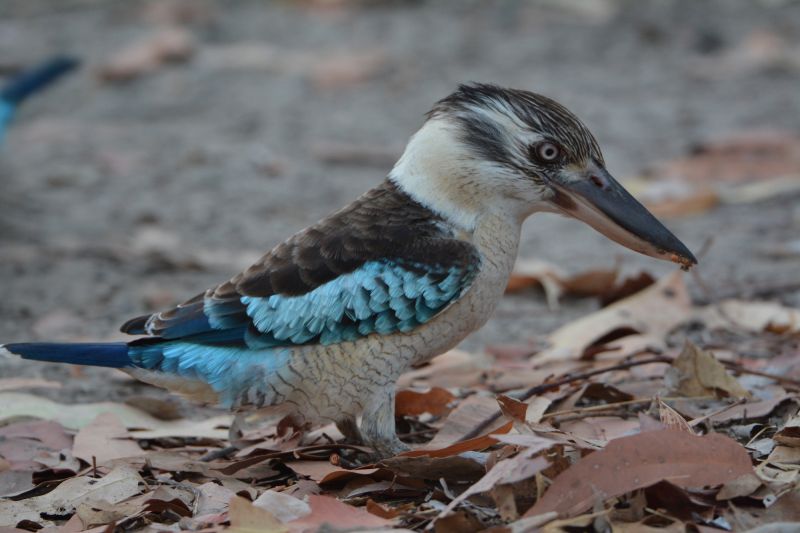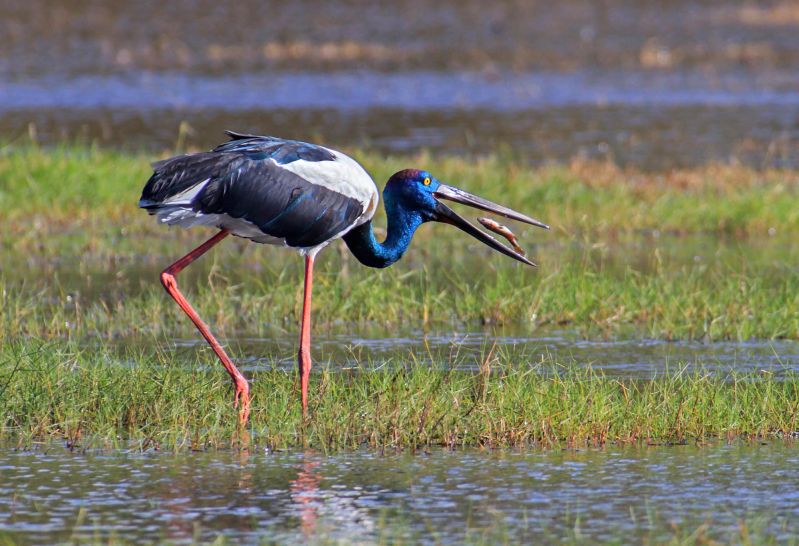It’s hard for Dean Hoath, longstanding guide at Lords Kakadu & Arnhemland Safaris, to name just one favourite bird. “I love all birds, but one of my favourite birdwatching experiences is when we stay at the Lords Kakadu & Arnhemland Safaris permanent bush camp in Kakadu National Park,” he says.
“We have a family of about nine Blue-winged Kookaburras that hang out on the camp grounds; Black Cockatoos often come to visit; bright blue Azure Kingfishers pop by; and watching the Great Bowerbirds attempt to dance is always a highlight. The Great Bowerbird dance is more like a hop with a broken leg, and the plume of purple he shoots out of its head when he finds a mate is interesting.”
 Blue-winged Kookaburras are often sighted at the Lords permanent bush camp in Kakadu National Park. Image: Lords Kakadu & Arnhemland Safaris
Blue-winged Kookaburras are often sighted at the Lords permanent bush camp in Kakadu National Park. Image: Lords Kakadu & Arnhemland Safaris
Dean could talk about birds all day… and he does when leading any tour where birds are the focus. “We travel through a big variety of ecosystems, so we are always exposed to different kinds of birds every day,” he says. “We have over 280 species of birds in the region.”
Watch - Lords Kakadu & Arnhemland Safaris: Our Story
As the landscapes change, so too do the birdwatching experiences. At the camp, the bird encounters are on a smaller scale, whereas at Bamurru Plains witnessing birds en masse can take one’s breath away.

Bamurru Plains is home to an extraordinary diversity of birdlife including the Jabiru. Image: Lords Kakadu & Arnhemland Safaris
“Some guests have never seen so many birds in one place and on such a scale. We’re talking thousands and thousands of birds at the one time,” Dean explains. “We see thousands of Whistling Ducks taking off and filling the sky like a cloud. Then we turn a corner and see the Magpie Geese, also in their thousands. The enormity and scale of it is awe-inspiring.”
 Guests often witness Magie Geese in their thousands. Image: Lords Kakadu & Arnhemland Safaris
Guests often witness Magie Geese in their thousands. Image: Lords Kakadu & Arnhemland Safaris
Although Dean is privy to seeing birds on such a scale on a daily basis during the dry season, he is still humbled by the sight. “Fogg Dam is another location where we often see birds en masse, and it’s a very interesting setting because it’s a dam wall, with lush wetlands on one side and dry wetlands and grasslands on the other,” Dean says. “Ducks and ibises abound in huge numbers in the wetlands, while Magpie Geese, spoonbills, Brolgas and Jabirus are easily spotted on the dry side.
Kakadu Birding Tour (3 days/ 2 nights)
The World Heritage Listed Kakadu National Park is one of the most pristine environments left on the planet and the combination of soil floodplains, paper bark swamps, savannah woodlands, monsoonal rainforests and river mangroves make this one of the world’s great birdwatching sites.

